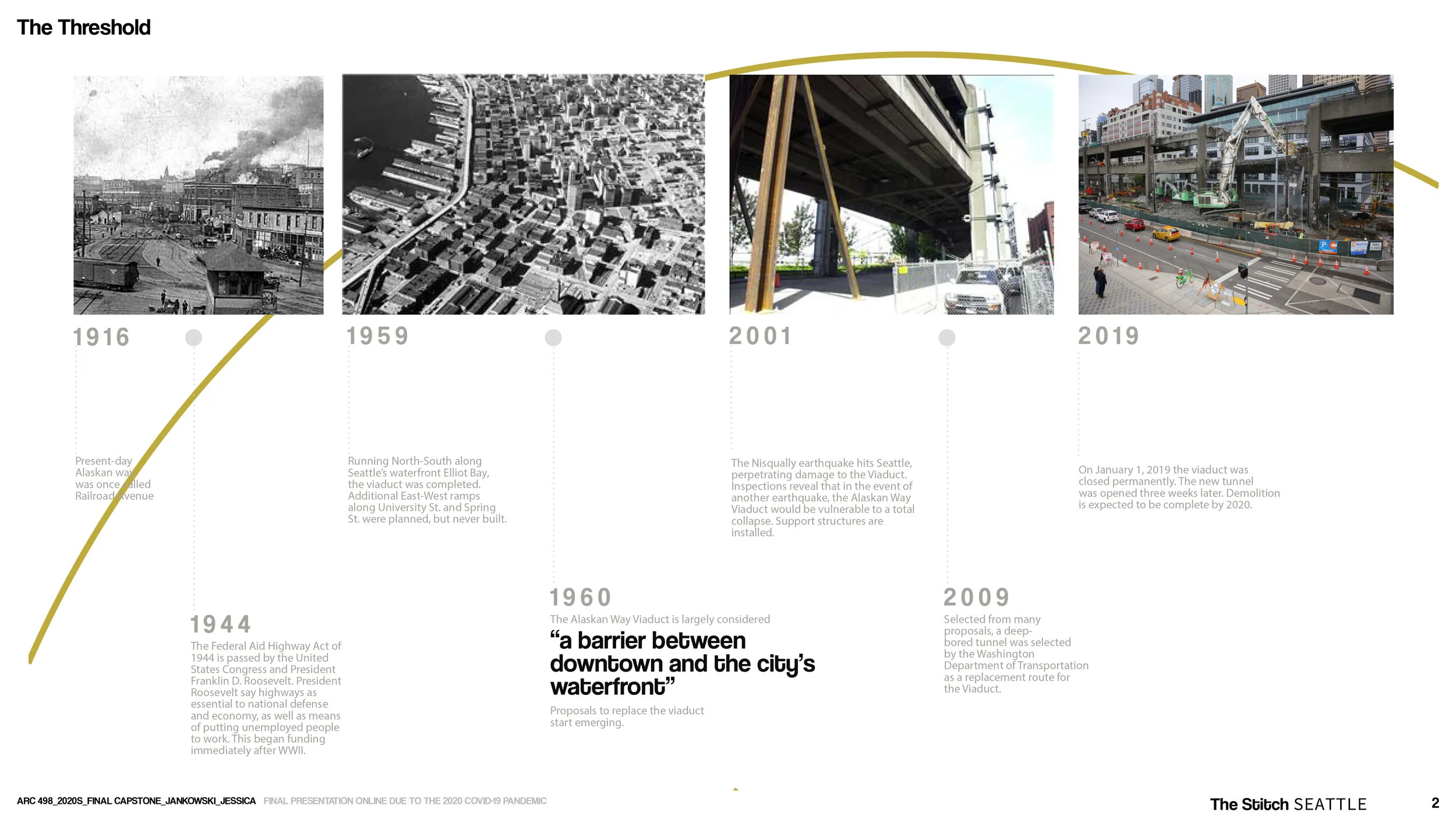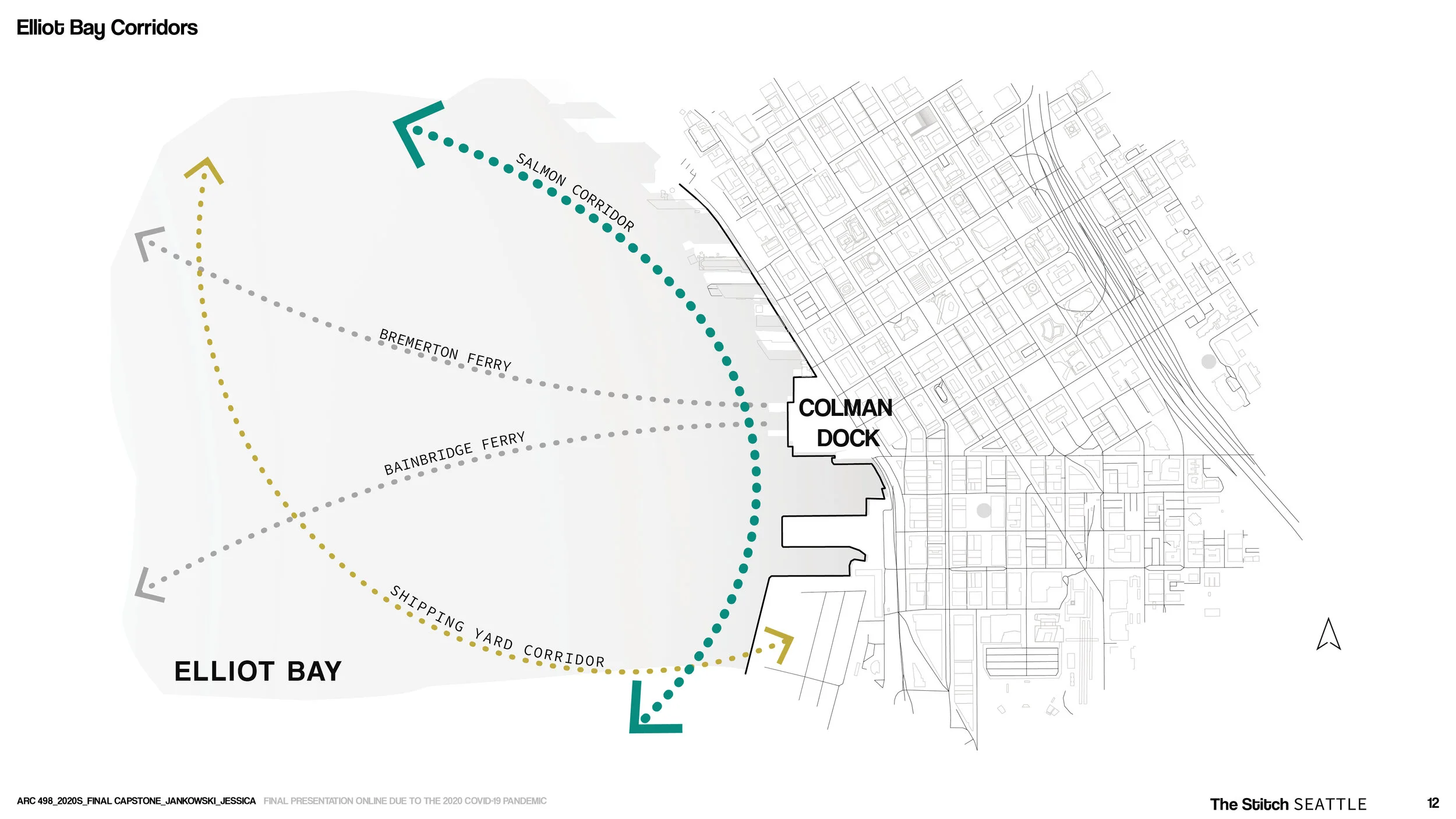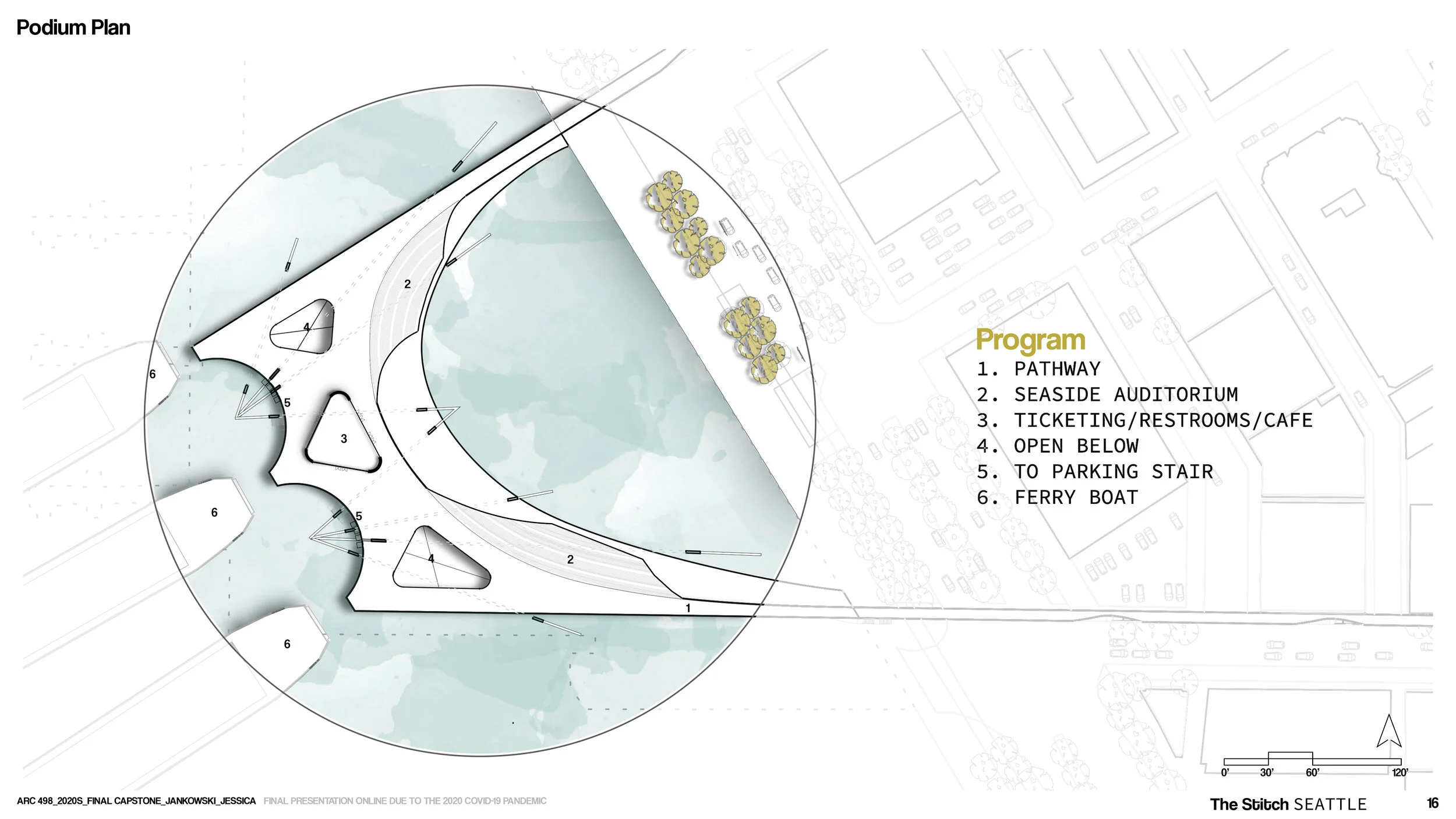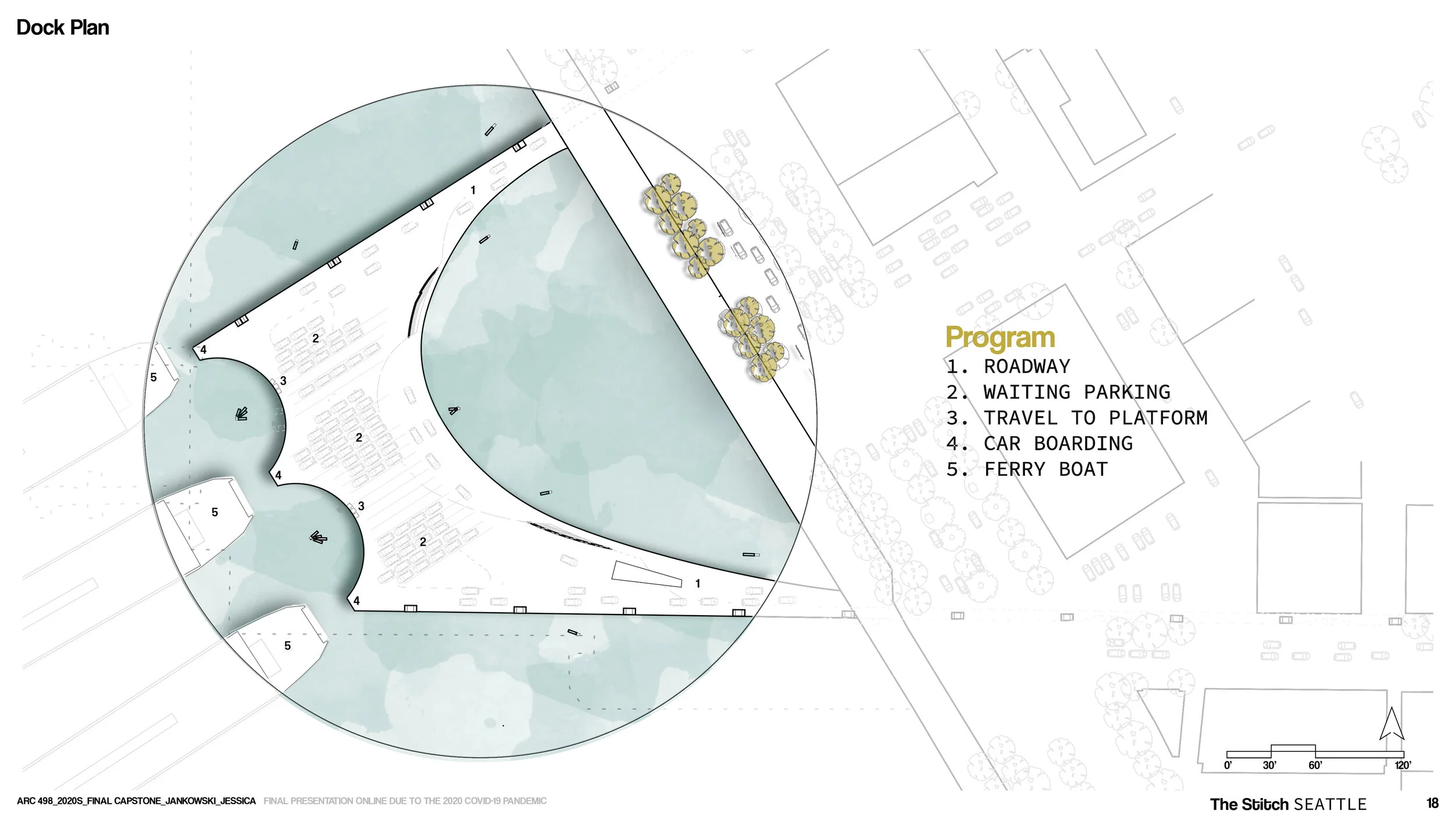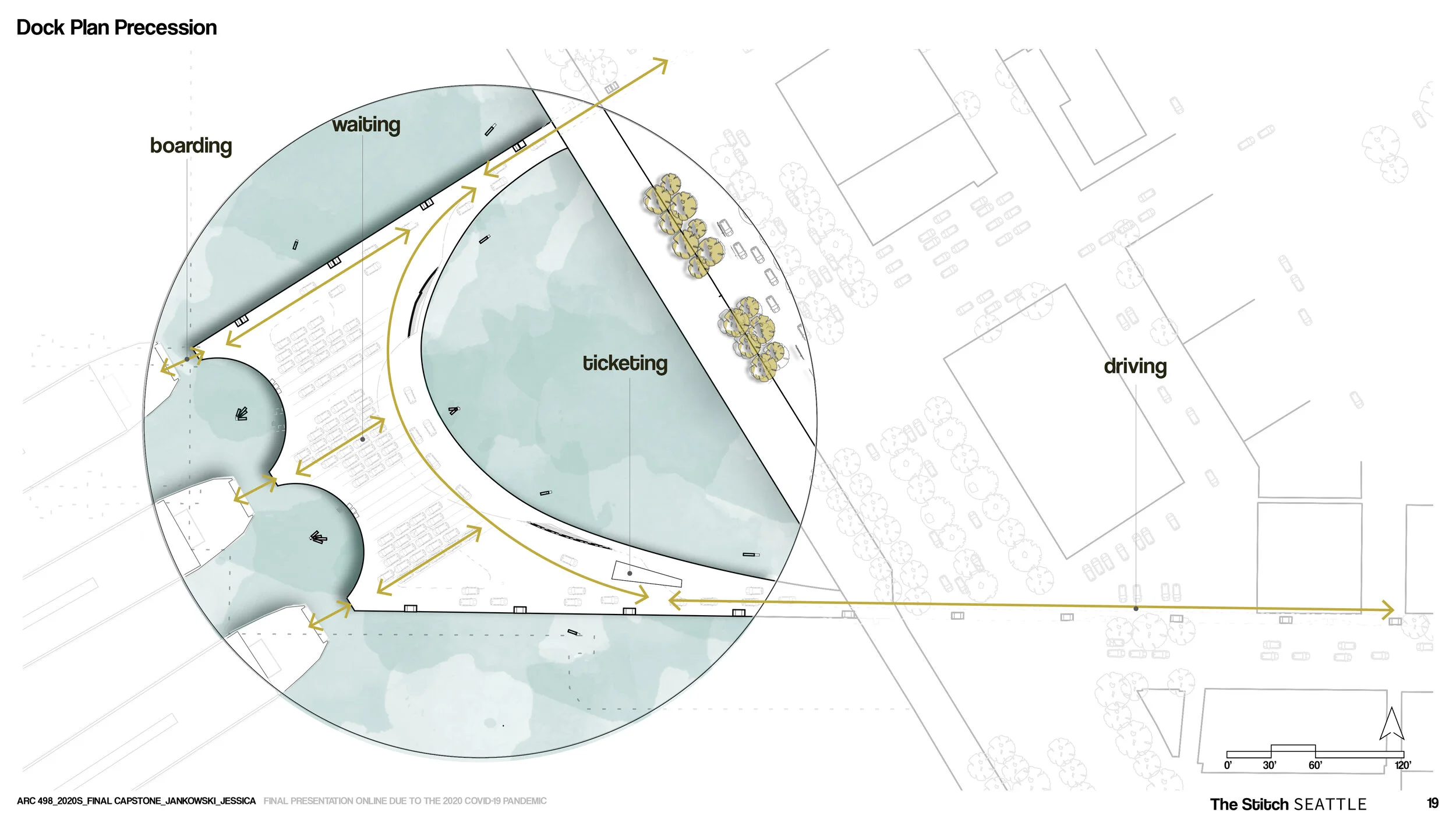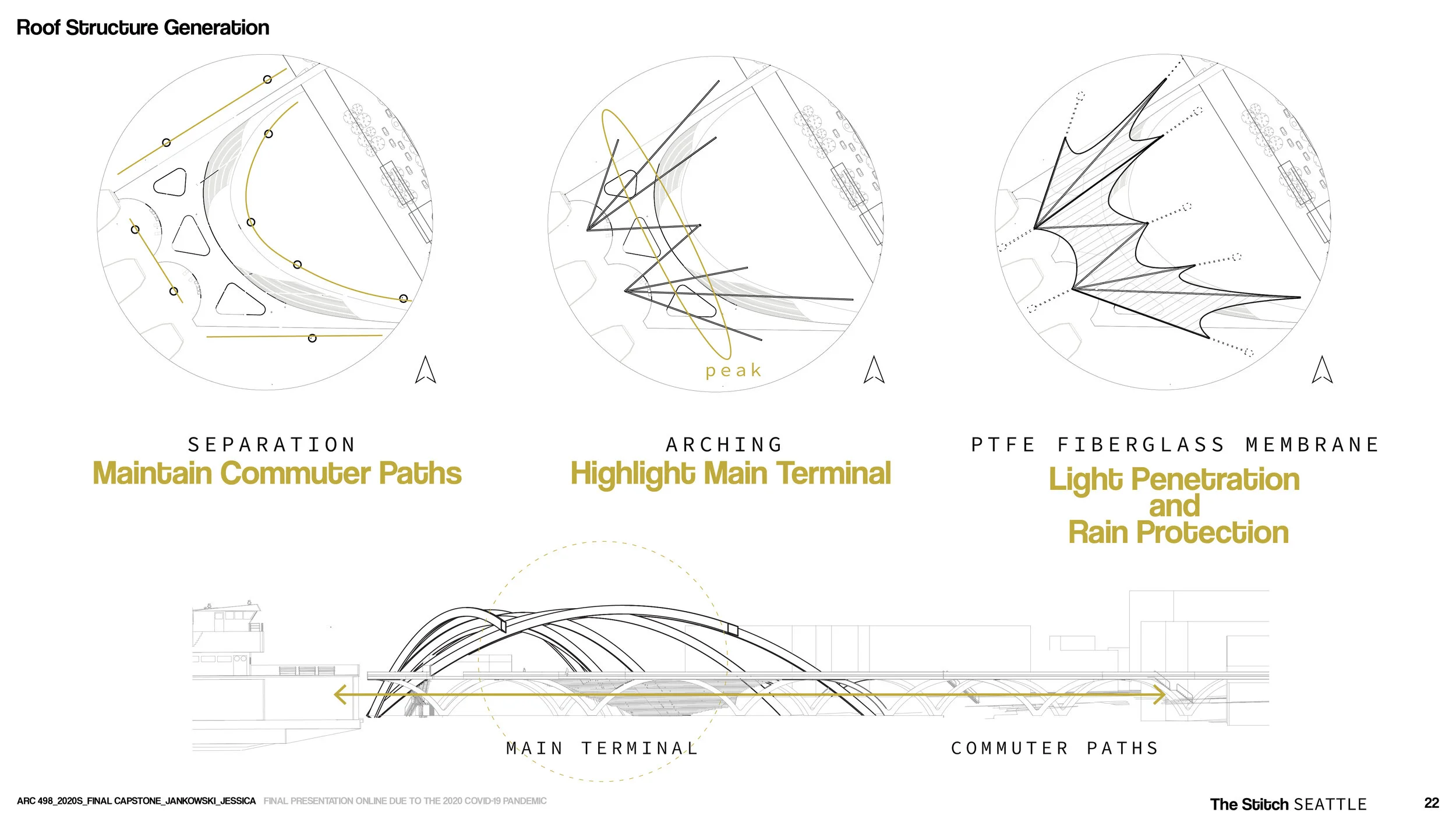The Alaskan viaduct, adjacent to Elliot Bay on Seattle’s west coast, has existed as a barrier between the waterfront and downtown Seattle since it’s completion in 1959, but its recent failure and demolition has provided a unique opportunity to redefine the relationship between the Central Business District and waterfront. In his article Redefining Infrastructure Pierre Belanger asks, “How then can we rethink the conventional logic of infrastructure- the background process of essential services that underlies cities and regions- to effectively sustain sprawling populations…in the future?”
The Stitch provides urban infrastructure that is more inclusive to the public realm, cultivating the latent potential of the new threshold. A marine plaza supported by glulam arches gathers around a protected lagoon and rises to the ferry terminal, providing a unique engagement with both the city and the adjacent biosphere. The protective arch structure and canopy delicately meet the water below, providing shelter for rain events, support for local wildlife, while preserving the essential condition of pedestrian ferry access and public gathering.
The procession of The Stitch begins on a ferry boat, one of many that carry more than 8.5 million passengers a year to Colman Dock, culminating at the heart of downtown Seattle along extended King County Metro Public Transit Routes. Layered outdoor programming of gardens, cafes, ticketing offices, waiting areas, recreating, and tourist viewpoints allow site specific experiences to organically unfold, while remediating the marine biome to allow for a more equitable space for the flora and fauna of Puget Sound to coexist with the teeming metropolis. The Stitch bridges the threshold of Alaskan way, efficiently uniting Seattle with her sister, Elliot Bay.



